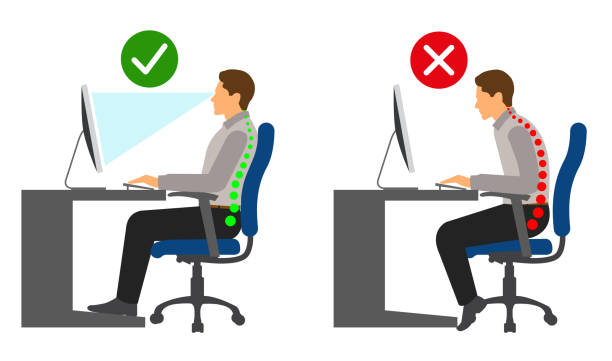“Sit Up Straight!”

Your parents were right when they nagged you about the importance of good posture. Poor posture can trigger back pain and may even affect the alignment of your entire body. Learning about the many negative effects of poor posture just might prompt you to make a few positive changes to your posture.
How Poor Posture Affects Your Back
Slouching throws off the alignment of your spine, stressing your muscles and joints while also increasing your risk of back pain. Normally, all the parts of your spine function as a single unit to support your weight. If your back isn’t properly aligned, one area may be required to support a greater percentage of your total body weight. Over time, this imbalance can lead to chronic pain in your back.
Poor posture may also play a role in:
- Back Injuries. You’re more likely to hurt yourself if your spine, joints, muscles, and ligaments are tight or aren’t properly aligned. These issues can also affect your balance and increase your risk of a fall.
- Arthritis and Joint Pain. Tight muscles can put unnecessary stress on your joints and cause excessive wear that causes or worsens these conditions.
- Increased Pain. Tight muscles are painful enough on their own, but muscle tension can also have other consequences. These muscles may press on nerves, increasing back pain, or even pull the vertebrae in your spine out of alignment. Vertebrae are the small bones that make up your spinal column.
- Decreased Flexibility. Your flexibility and range of motion can be affected if poor posture causes spinal misalignments and tightens muscles, tendons, and ligaments.
- Muscle Fatigue. It takes much more effort to move tight muscles and joints than loose ones. If you don’t practice good posture, you may find that you get tired more easily when you exercise.
- The Way You Walk. Poor posture can change your gait, which can trigger imbalances throughout your entire body.
- Headaches. Misaligned vertebrae and tight muscles in the neck, shoulders, and upper back can be a factor in tension headaches and migraines.
Practicing the Perfect Posture
Improving your posture may be a simple way to decrease the aches and pains in your back. Although many of us automatically assume a military posture when prompted to stop slouching, this posture could actually make your back problems worse.
A more natural standing posture is more beneficial for your back. The American Chiropractic Association (ACA) recommends standing with your knees slightly bent and shoulder-width apart with your shoulders pulled back. As you stand, focus on keeping your weight on the balls of your feet while tucking your stomach. (Rounding your back can cause your stomach to protrude.)
Pay attention to the position of your neck too. Many people hold their heads forward or to one side and aren’t aware that they’re doing this. The ACA recommends that your keep your head level and make sure that your earlobes are over your shoulders.
Your Chiropractor Can Help You Improve Your Posture and Ease Your Pain
Medication isn’t the only way to treat back pain. Chiropractic treatment can ease your symptoms without any side effects.
In addition to offering spinal manipulation and other treatments, your chiropractor can recommend exercises that will strengthen the muscles in your back and abdomen. They can also discuss other changes that may improve your posture, such as using ergonomic office furniture, changing your sleeping position, or losing a few extra pounds.
Do you have back pain due to poor posture? Chiropractic treatment can help relieve your pain naturally and improve your posture.
